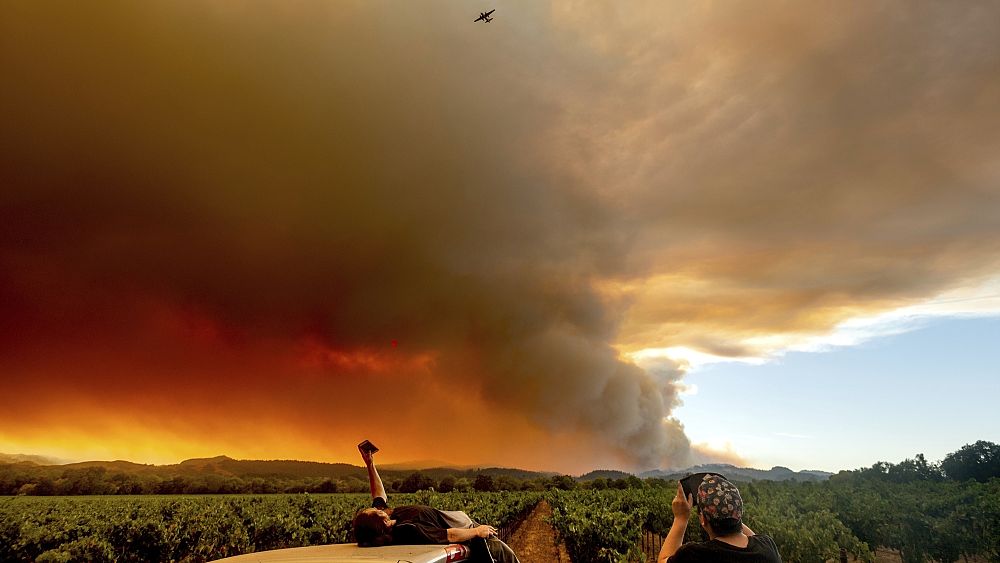A lot of people would like to forget 2020 even happened but while the year has brought hardship, it has also enriched our vocabulary with words we hardly ever used before.
Here is our selection of them.
Pandemic
Fairly obvious, but most of us hardly ever uttered the word before February. According to Merriam-Webster — a US dictionary publisher — by early March, pandemic “was being looked up an average of 4,000% above levels in 2019”.
On a similar register, quarantine was looked up nearly 1,900% more frequently in 2020 than in 2019.
Over in the UK, the Oxford English Dictionary also flagged lockdown, remotely and furlough as some of its words of the year.
Virtual happy hour
Multiple lockdowns, as well as bar and restaurant closures have redrawn the map of our social lives. A new kind of gathering was born in 2020: after remote-working comes the remote happy hour.
And after nine months of virtual happy hours, which also included evenings of board games, trivia quizzes to compensate for the isolation of the successive weeks of lockdown, we are now moving towards the end of the year festivities, also by videoconference.
Megafire
Australia, Brazil, the United States, Russia: 2020 has seen many huge forest fires, fuelled by climate change and resulting in the destruction of millions of hectares of forest and scrub.
In addition to the impact on the fauna and flora of the ecosystems that went up in smoke, the health and ecological impacts of these megafires are being felt worldwide including pollution caused by smoke, soot and ashes and very significant emissions of carbon monoxide (CO) and carbon dioxide (CO2) into the atmosphere.
Pangolin
Think back to January 2020, could you have described a pangolin then, if asked? Bet you can now.
These mammals haven’t been having the best of times in recent years. According to a report published in 2020 by the United Nations Office on Drugs and Crime, seizures of pangolins increased tenfold between 2014 and 2018. This illegal trade makes them vulnerable to extinction.
That’s because their scales are used in traditional Chinese medicine and their meat is also considered a delicacy.
If that wasn’t enough, they have been pointed out as a potential source of the coronavirus.
Unbolting
Anti-racism protests, revived by the police killing of George Floyd in Minneapolis, also rekindled the debate over statues of controversial historical figures on both sides of the Atlantic.
In the UK, the statue of a British slave trader was toppled in Bristol, while that of former Prime Minister Winston Churchill was protected by police during protests in central London. In Belgium, activists have called for the removal of monuments depicting former King Leopold II, who brutally ruled over what is now the Democratic Republic of the Congo (DRC).
In France, President Emmanuel Macron has ruled out unbolting statues, calling instead for the country to “lucidly look together at all our history”.
Doom-scrolling
With all its depressing information, 2020 has been a breeding ground for doom-scrolling — “doom” here means ruin, and scrolling means scrolling on a computer or application.
The podcast “Maintenant, vous savez” (Now you know) explains the phenomenon in the following way: “Every Twitter, Instagram or Facebook user knows this phenomenon: you open the application a bit automatically and get caught up in the news feed, you scroll, that is to say, you go down, down and down into the infinity of publications. If you add to that a slightly anxiety-provoking situation, with a lot of news, it’s even more difficult to get out of it.”
Medical populism
With the pandemic, uncertainty and the need for information on the new virus have favoured the emergence of new figures, whether from the medical or non-medical world, proposing simple solutions to a complex, fluid situation that continues to be analysed by the scientific community to this day. Among these figures is Professor Didier Raoult, whose controversial proposal to treat COVID-19 patients with hydroxychloroquine saw him attract global attention.
Dr Damien Barraud, a doctor at the Metz-Thionville CHR COVID-19 unit, is one of the health professionals who strongly criticised his colleague and his treatment in the French media. “Taking everyone hostage and wanting to pass for the saviour with the miracle drug that will save the world, by sitting on all the methodological and ethical rules — yes, this is medical populism,” Dr Barraud told French media in April.
The pandemic has also led to an explosion of conspiracy theories, particularly online. False information and unsupported theories have flourished in certain media and on the internet. Conspiracy documentaries such as “Plandemic” in the United States or “Hold-Up” in France have even become viral themselves.
ARNm
Behind this acronym lies one of the great hopes for 2021 in the fight against the Covid-19 pandemic: messenger RiboNucleic Acid (mRNA) vaccines. According to France’s National Institute of Health and Medical Research, the principle of nucleic acid vaccines (RNA or DNA vaccines) is slightly different from that of traditional vaccines — an injection of an attenuated or inactivated form of an infectious agent. “Although the basic idea is also to confront the immune system with a ‘decoy’ to induce it to develop antibodies against the virus,” it said.
For RNA vaccines, including those from Pfizer/BioNTech and Moderna, the aim is “to have the fragments of infectious agents produced directly by the cells of the vaccinated individual. To do this, it is not the virus in its attenuated form that is injected, but only DNA or RNA molecules coding for proteins of the pathogenic agent”.
In the case of the SARS-CoV-2 coronavirus, this is the spike protein present on the surface of the virus. France’s INSERM explained that this protein is “the ‘key’ that allows the virus to cling to the cells and then penetrate and infect them. The choice of an RNA vaccine rather than a DNA vaccine was made so that the spike protein can be produced directly in the cytoplasm of the vaccinated person’s cells, without passing through the nucleus.
A method, according to Inserm, that is safe for the genetic make-up of the vaccinated person and is even better tolerated by the organism because it uses neither chemical adjuvants nor whole viruses. This type of vaccine is the result of many years of research, notably by the Hungarian biochemist Katalin Kariko, who has been working on the issue for almost thirty years and is now used by BioNTech.








